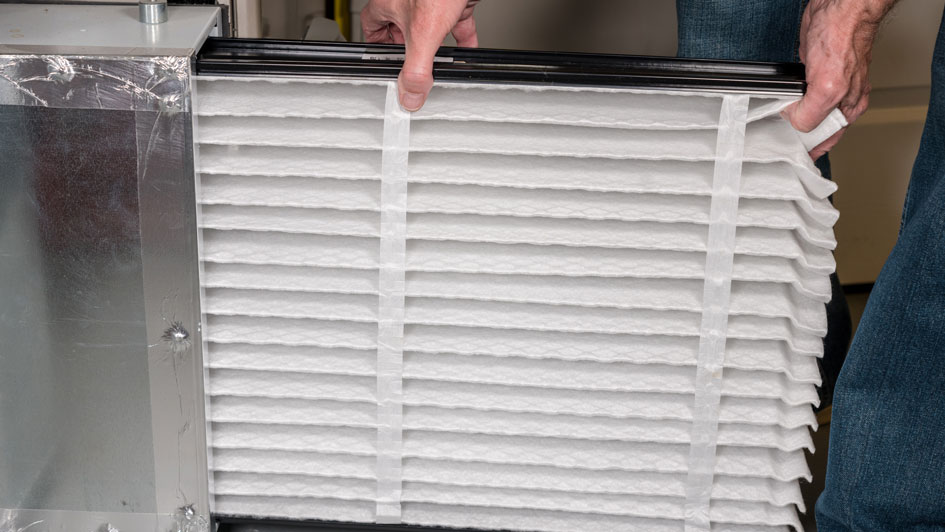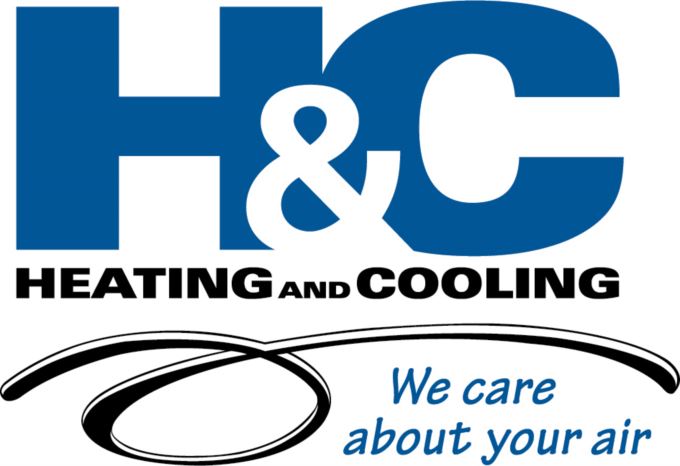
Picking out the proper furnace filter and changing it when it gets dirty is as important to your HVAC system as changing the oil is to your car. Each plays a vital function in keeping its system operating safely, efficiently and for a long time.
A dirty furnace filter loses its effectiveness, enabling potentially harmful particles to flow through your home. It also slows airflow, which can damage your furnace and shorten its life span.
Ensuring your furnace uses a clean filter that is suitable for your needs is not only about keeping your furnace running efficiently. It’s also about creating good indoor air quality for your home.
The quality of the air your family breathes is important to the HVAC professionals at H&C Heating and Cooling. We've long focused on bettering indoor air quality in Laurel. Here, we’ve answered frequent questions about HVAC filters, including that particularly tricky question of what direction do you point a filter in your furnace or air conditioner?
When to Replace the Air Filter in Your Furnace
It's vital to replace dirty air filters in a furnace or air conditioner regularly. Soiled filters cause the system to worker harder than it should because it takes extra effort to pull air through the plugged-up filter.
Officials suggest inspecting your furnace filter every 30 days and replacing it if it’s dirty. You’ll know if it is dirty because it will filled with dirt or dust. Homeowners who have dogs and cats will probably have to replace their furnace air filter more often, because an effective air filter will trap pet hair circulating in a home.
Where Is the Air Filter in My Furnace?
In general, a furnace air filter is usually located in the return air duct or blower compartment before the return air gets to the furnace. This makes sure air entering the system is filtered before it goes through the furnace components and is heated.
Depending on the type of furnace, the filter may be located on the right, left, bottom or in some cases, within the furnace. It's generally housed within a slot, frame or cabinet for simple access and replacement. Always refer to your furnace's owner manual for information regarding filter location of the furnace in your home.
Is a Furnace Filter the Same as an Air Filter?
The straightforward answer is, yes. In HVAC, a furnace filter and an air filter or air conditioning filter are essentially the same thing. While they might be called different things based on the current season— summer or winter—they are all filters that clean the air in your residence.
They each get rid of dust, allergens, bacteria and other particulates from the air that is drawn into the furnace and air conditioning system, making sure the air flowing through your home is clean and safe.
What Is a MERV Rating and What Rating Is Best for Me?
Once you locate your old furnace filter and decide when it should be changed, it’s time to choose a replacement. That means determining the level of filtration that you need. One approach to this is by choosing an appropriate MERV rating for your needs.
MERV stands for Minimum Efficiency Reporting Values. The MERV rating measures the effectiveness of air filters at trapping airborne molecules. The rating scale ranges from 1 to 20, with higher numbers indicating the power to filter smaller particles.
Experts say a filter with a MERV rating between 8 and 13 offers an ideal balance between having adequate indoor air quality without unnecessarily restricting airflow. However, people with certain health conditions might need to purchase a filters with a higher MERV rating.
Which Way to Put the Air Filter in a Furnace or Air Conditioner
Putting an air filter in a furnace or air conditioner correctly is necessary for the efficient operation of the unit. Air filters have a specific direction, indicated by an arrow printed on the side of the filter frame. The filter should be placed in the unit with this arrow pointing in the direction of the furnace or AC, which is the direction of the airflow. If you're unsure about the airflow direction, remember that air always moves from the return duct to the heat or cooling source. Therefore, make sure the arrow points toward the furnace or air conditioner.
Many people are confused by which direction to point their system's air filter. To help remember, consider snapping a quick photo with your cellular phone after the filter has been correctly installed by a professional. Or, you also could ask a technician to use a marker to write on the outside of your furnace which direction the filter should be installed. A great time to inquire about this is during a regular furnace maintenance visit.
How to Replace Your Furnace Air Filter
Replacing the filter on your furnace or AC is a simple process. Here is a step-by-step breakdown of how to retreive a dirty air filter and exchange it for a new one:
- Turn off your furnace: Make a point to switch off your furnace before starting the process.
- Locate the furnace filter: Typically, the filter is located within the furnace or in the air return vent. Make a mental note or write down which direction the arrow points on the filter, because you’ll want the arrow on the new filter to point similarly.
- Slide out the old filter: Be mindful not to knock out any dust or particles.
- Document the date: Write down the date of replacement on the new filter's frame. This will help your family keep track of when it's time for the next change.
- Put in new filter: Put in the new filter with the arrow pointing in the direction of the furnace, which is the direction of airflow and should be the same direction the arrow pointed on the old filter you are replacing.
- Secure the filter: Make sure the new filter fits correctly and close any latches or clips that secure it in the compartment.
- Turn on your furnace: Once the clean filter is safely secured, you can turn your furnace back on.
Will a Dirty Air Filter Cause a Furnace Not to Work?
The simple answer is, yes, a dirty air filter can cause a furnace to cease working or limit its lifespan. Changing your furnace or AC filter is one of the easiest things you can do to keep your system operating efficiently.
